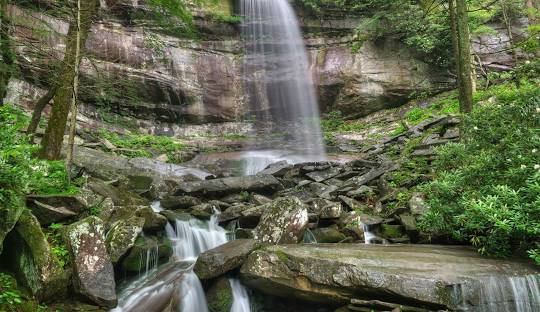Exploring the Mystical Realm of Sacred Space

The Concept of Sacred Space
Sacred space is a fundamental concept found in various cultures and religions around the world. It refers to a physical or metaphysical place that holds special significance and is imbued with spiritual or religious meaning. These spaces are often considered holy, set apart from the ordinary world, and are believed to be infused with divine presence.
In many traditions, sacred spaces serve as places of worship, prayer, meditation, and reflection. They are designed to inspire awe, reverence, and a sense of connection to the divine. These spaces can take many forms, including temples, churches, mosques, shrines, natural landscapes, and even personal altars within homes.
Creating and maintaining sacred spaces is an important practice in many spiritual traditions. People often visit these spaces to seek solace, guidance, healing, or simply to connect with something greater than themselves. The rituals performed within these spaces help individuals cultivate a deeper sense of spirituality and connection to the divine.
Throughout history, sacred spaces have played a central role in religious ceremonies and cultural practices. They serve as focal points for community gatherings and celebrations, fostering a sense of unity and shared purpose among believers. These spaces also act as repositories of tradition and wisdom, preserving the teachings and values of a particular faith or culture.
Ultimately, the concept of sacred space reminds us of the transcendent nature of existence and our interconnectedness with the universe. By honoring these spaces and engaging in meaningful rituals within them, we can cultivate a deeper sense of spirituality, peace, and harmony in our lives.
8 Benefits of Sacred Spaces: Enhancing Spiritual Connection and Personal Growth
- Provides a place for spiritual reflection and meditation.
- Inspires feelings of peace, tranquility, and serenity.
- Fosters a sense of connection to the divine or higher power.
- Encourages mindfulness and presence in the present moment.
- Serves as a sanctuary for individuals seeking solace and comfort.
- Promotes community bonding through shared worship and rituals.
- Preserves cultural heritage and traditions for future generations.
- Offers opportunities for personal growth, healing, and transformation.
Challenges of Sacred Spaces: Navigating Exclusivity, Division, Commercialization, and Rigidity
Provides a place for spiritual reflection and meditation.
Sacred spaces offer a serene and contemplative environment for individuals to engage in spiritual reflection and meditation. These designated areas provide a peaceful retreat from the hustle and bustle of daily life, allowing people to quiet their minds, connect with their inner selves, and explore deeper aspects of their spirituality. By immersing oneself in the tranquil atmosphere of a sacred space, one can foster a sense of inner peace, clarity, and mindfulness, ultimately leading to personal growth and spiritual rejuvenation.
Inspires feelings of peace, tranquility, and serenity.
Sacred spaces have the remarkable ability to inspire feelings of peace, tranquility, and serenity in those who enter them. Whether it be a majestic cathedral, a serene garden, or a quiet meditation room, these sacred places offer a sanctuary from the hustle and bustle of everyday life. The atmosphere of reverence and spiritual significance that permeates these spaces helps individuals to find solace, calm their minds, and connect with their inner selves. By providing a retreat from the chaos of the outside world, sacred spaces offer a profound sense of peace and harmony that can rejuvenate the spirit and soothe the soul.
Fosters a sense of connection to the divine or higher power.
Sacred spaces have the profound ability to foster a deep sense of connection to the divine or a higher power. By creating environments that are designated for spiritual practices, worship, and reflection, individuals are able to transcend the mundane and tap into a sense of something greater than themselves. These spaces serve as conduits for spiritual experiences, allowing people to cultivate a profound connection with the divine that can bring comfort, guidance, and a heightened awareness of their place in the universe. The sacredness of these spaces acts as a reminder of our interconnectedness with something beyond the physical realm, nurturing a sense of awe and reverence that can inspire personal growth and transformation.
Encourages mindfulness and presence in the present moment.
Sacred spaces have the profound ability to encourage mindfulness and presence in the present moment. When individuals enter these spaces, they are often greeted with an atmosphere of tranquility and reverence that prompts them to slow down, quiet their minds, and focus on the here and now. By immersing themselves in the spiritual ambiance of a sacred space, people are reminded to be fully present, to appreciate the beauty around them, and to connect with their inner selves on a deeper level. This practice of mindfulness within sacred spaces can lead to increased self-awareness, inner peace, and a heightened sense of connection to the divine or spiritual realm.
Serves as a sanctuary for individuals seeking solace and comfort.
Sacred spaces serve as sanctuaries for individuals seeking solace and comfort in times of need. These spaces provide a peaceful retreat from the chaos of everyday life, offering a tranquil environment where one can find solace, reflect on their thoughts, and seek inner peace. Whether it be a quiet corner of a church, a secluded spot in nature, or a personal altar at home, sacred spaces offer a refuge for individuals to connect with their spirituality, find emotional healing, and experience a sense of comfort and reassurance amidst life’s challenges.
Promotes community bonding through shared worship and rituals.
Sacred spaces play a crucial role in promoting community bonding through shared worship and rituals. These spaces serve as gathering points where individuals come together to engage in collective prayers, ceremonies, and other spiritual practices. By participating in these shared activities within the sanctity of a sacred space, people strengthen their connections with one another, fostering a sense of unity, belonging, and mutual support within the community. This shared experience of worship and ritual helps build relationships, deepen social ties, and create a sense of solidarity among believers, contributing to the overall cohesion and well-being of the community.
Preserves cultural heritage and traditions for future generations.
Sacred spaces play a vital role in preserving cultural heritage and traditions for future generations. These spaces serve as repositories of knowledge, wisdom, and rituals that have been passed down through generations. By maintaining and honoring sacred spaces, communities ensure that their cultural practices, beliefs, and values are safeguarded and transmitted to the next generation. Through continued engagement with these spaces, individuals can connect with their cultural roots, fostering a sense of identity and belonging that strengthens the continuity of tradition over time.
Offers opportunities for personal growth, healing, and transformation.
Sacred spaces offer unique opportunities for personal growth, healing, and transformation. By providing a serene and spiritually charged environment, these spaces allow individuals to engage in introspection, self-reflection, and inner exploration. Through practices such as meditation, prayer, and contemplation within sacred spaces, people can tap into their inner wisdom, heal emotional wounds, and embark on a journey of self-discovery. The transformative power of sacred spaces lies in their ability to inspire profound shifts in consciousness, fostering personal development and spiritual evolution.
Exclusivity
Sacred spaces, while intended to foster spiritual connection and reverence, can inadvertently perpetuate exclusivity by restricting access to certain individuals or groups based on religious beliefs or practices. This exclusivity can create barriers that prevent people from different backgrounds or faith traditions from fully engaging with these spaces and experiencing the sense of peace and connection they offer. By limiting access in this way, sacred spaces risk alienating those who may benefit from the spiritual nourishment and community found within their walls, highlighting the need for greater inclusivity and openness in the design and management of these revered places.
Division
Sacred spaces, while intended to foster a sense of unity and connection within a community, can also inadvertently contribute to division among people of different faiths or beliefs. When certain spaces are designated as sacred exclusively for one group, it can create barriers and exclusivity that may lead to conflicts and tensions with those who do not share the same beliefs. This division can reinforce feelings of “us versus them” and hinder interfaith dialogue and understanding. It is important to recognize the potential for sacred spaces to inadvertently contribute to societal divisions and work towards creating inclusive and welcoming environments for all individuals, regardless of their beliefs.
Commercialization
The commercialization of sacred spaces for tourism or profit can pose a significant conundrum, as it may compromise their spiritual integrity and authenticity. When sacred sites are transformed into commercial ventures, there is a risk of diluting their original purpose and significance. The focus on generating revenue and catering to tourists’ needs can overshadow the sanctity and reverence that these spaces once held. This commercialization may lead to the exploitation of sacred traditions, distortion of cultural practices, and erosion of the genuine spiritual experience that visitors seek. It is essential to strike a balance between making these spaces accessible to the public while preserving their sacredness and ensuring that they retain their authenticity and spiritual value amidst commercial interests.
Rigidity
The con of rigidity in sacred spaces lies in the stringent rules and regulations that can potentially inhibit individual expression and creativity. While these guidelines are often put in place to maintain the sanctity and reverence of the space, they may inadvertently restrict personal interpretation and innovative approaches to spirituality. The strict adherence to traditional practices within sacred spaces can create a sense of conformity, limiting the freedom for individuals to explore their own spiritual journeys and connect with the divine in a more personal and authentic way. Balancing the preservation of sacred traditions with allowing room for individual expression is essential in ensuring that these spaces remain inclusive and relevant to a diverse range of believers.



